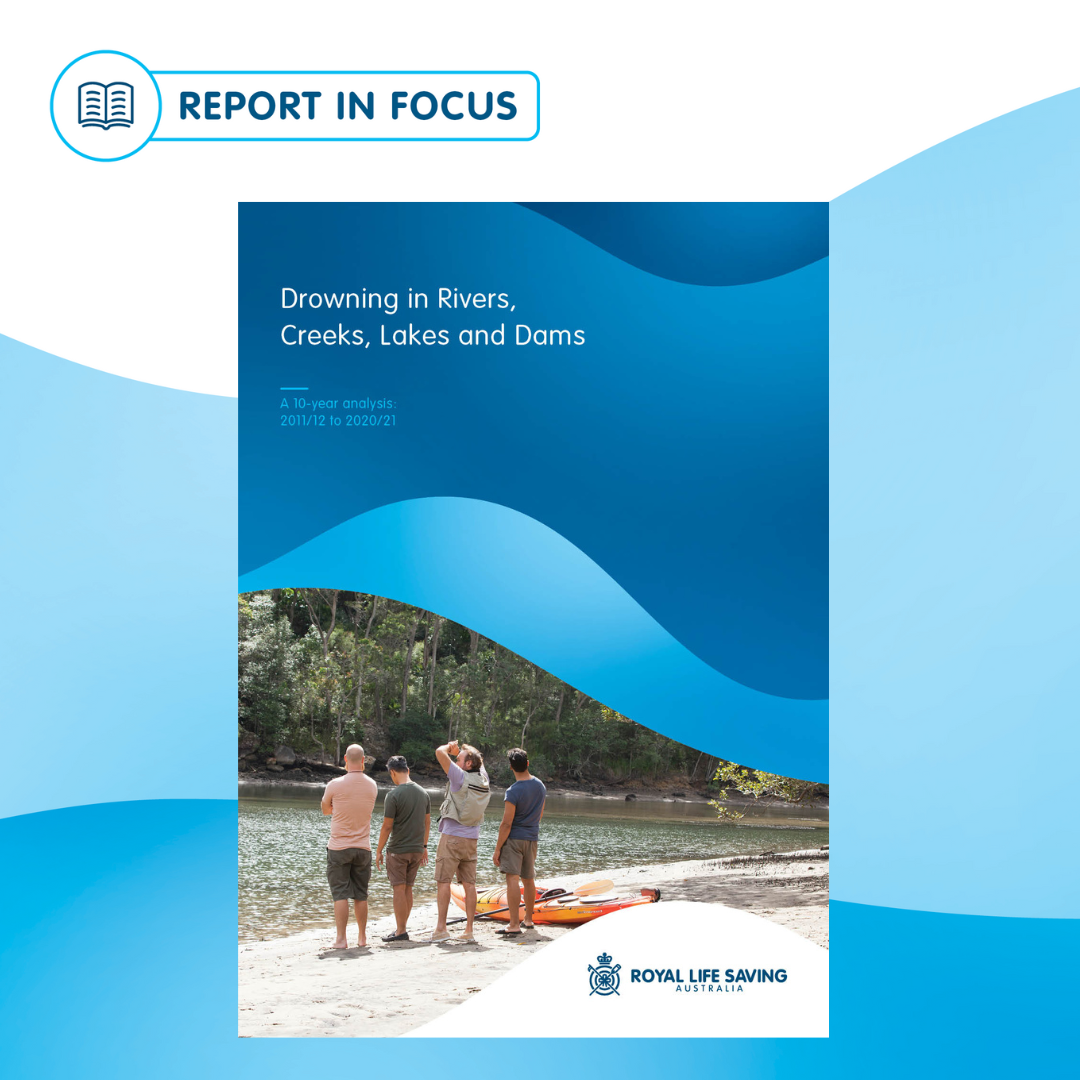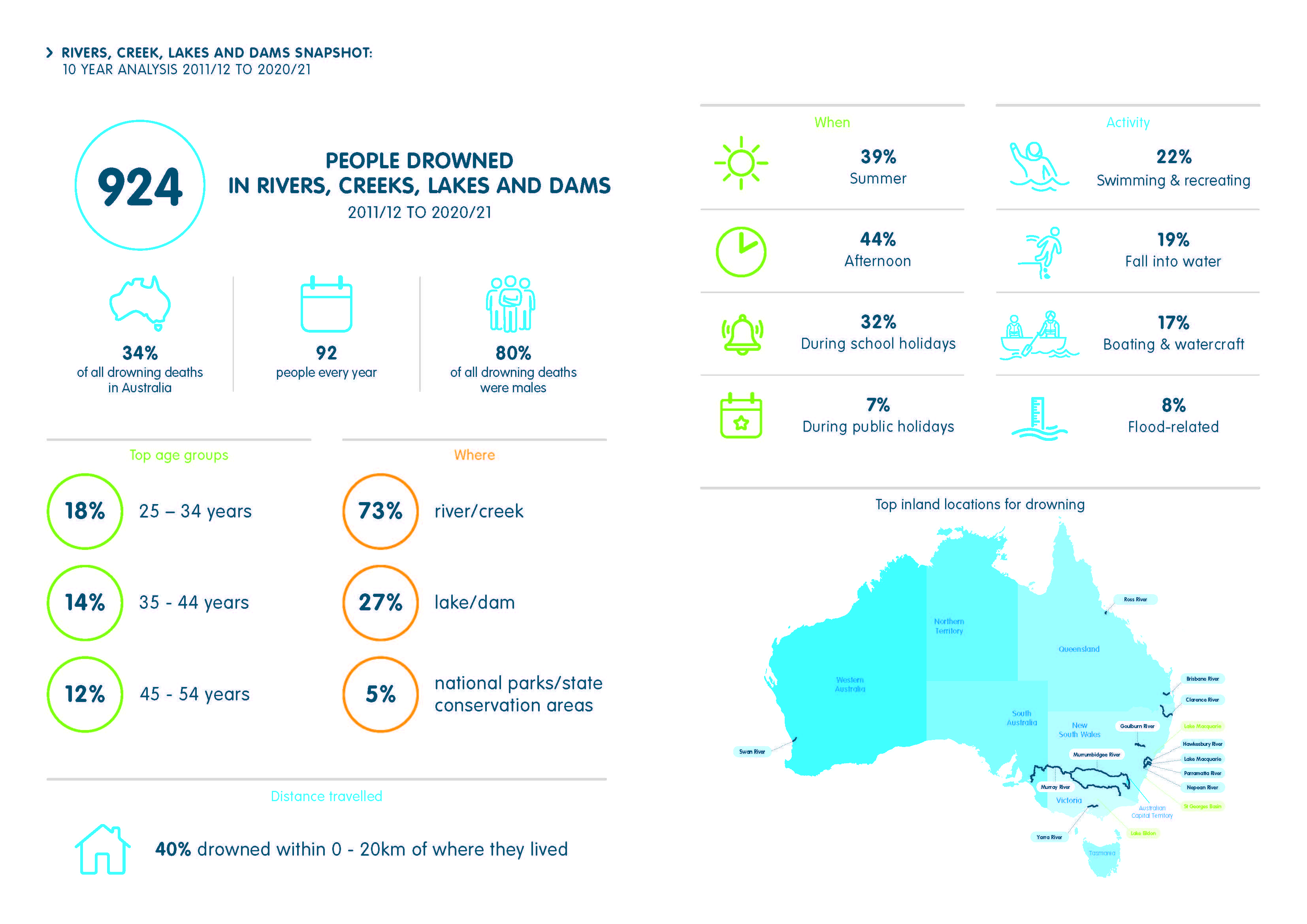Published 24 February 2023
 More than 900 people have drowned in inland waterways including rivers, creeks, lakes and dams in Australia in the ten years to 2020/21, accounting for more than a third of all drowning deaths in Australia.
More than 900 people have drowned in inland waterways including rivers, creeks, lakes and dams in Australia in the ten years to 2020/21, accounting for more than a third of all drowning deaths in Australia.
New research by Royal Life Saving Society – Australia analysing all drowning deaths for the decade found 924 people drowned in inland waterways, with males making up 80 per cent of the drowning toll.
For the first time, drowning deaths in national parks and state conservation areas have been detailed, with five per cent of deaths occurring in these popular recreation areas. A further five per cent drowned at a waterfall or swimming hole.
Royal Life Saving’s National Manager – Research and Policy Stacey Pidgeon said the number of drowning deaths in inland waterways was very concerning.
“We know on average 92 people lose their lives to drowning in inland waterways every year,” Ms Pidgeon said.
“Every drowning death ripples through the community, affecting families, friends, and colleagues. More than a fifth of those who drowned were swimming and recreating at the time, which means they purposefully entered the water.
“Almost a fifth of cases involved a fall into water. It’s an important reminder that whether you intend to go swimming or not, you have to be water safety conscious when you are in, on or around water.
“Rivers as a single location are the leading contributor to Australia’s unintentional fatal drowning burden.
“This is not just an issue for people travelling and unfamiliar with local waterways; 40 per cent of those who drowned in inland waterways were within 20km of home at the time.
“We know summer and school holiday periods see a significant rise in drowning deaths.
“It is important to remember that these are the figures only for fatal drowning; many more families experience non-fatal drowning, which can have lifelong consequences.”
The top 10 river drowning blackspots across Australia have not changed drastically over this ten-year period.
The Murray River remains the leading river blackspot for drowning across New South Wales (NSW), Victoria (VIC) and South Australia (SA), with the Yarra River in Melbourne (VIC), Hawkesbury River in Sydney (NSW), the Murrumbidgee River in ACT and the Swan River in Perth, Western Australia (WA) accounting for the top five deadliest rivers in Australia.
The top three lakes/dams for drowning include Lake Eildon in VIC, Lake Macquarie and St Georges Basin in NSW.
State by State data is included in the report.
To learn more about the report and insights view the full report here.
HOW TO STAY SAFE IN INLAND WATERWAYS
- Check conditions before entering the water
- Enter the water slowly, feet first
- Take care around crumbling riverbeds and slippery dam edges
- Avoid underwater obstacles such as rocks, branches, rubbish
- Take care when walking on unstable or slippery riverbeds
- Avoid crossing flooded waterways
- Avoid alcohol and drugs around water
- Wear a lifejacket when boating or using watercraft
- Always swim with a mate
To learn more about staying safe around Inland Waterways click here.
Royal Life Saving Society – Australia’s research, education and advocacy work in drowning prevention and water safety is supported by the Australian Government.
For media enquiries, please contact Media Key
on 0409 420 112 or 03 9769 6488.

